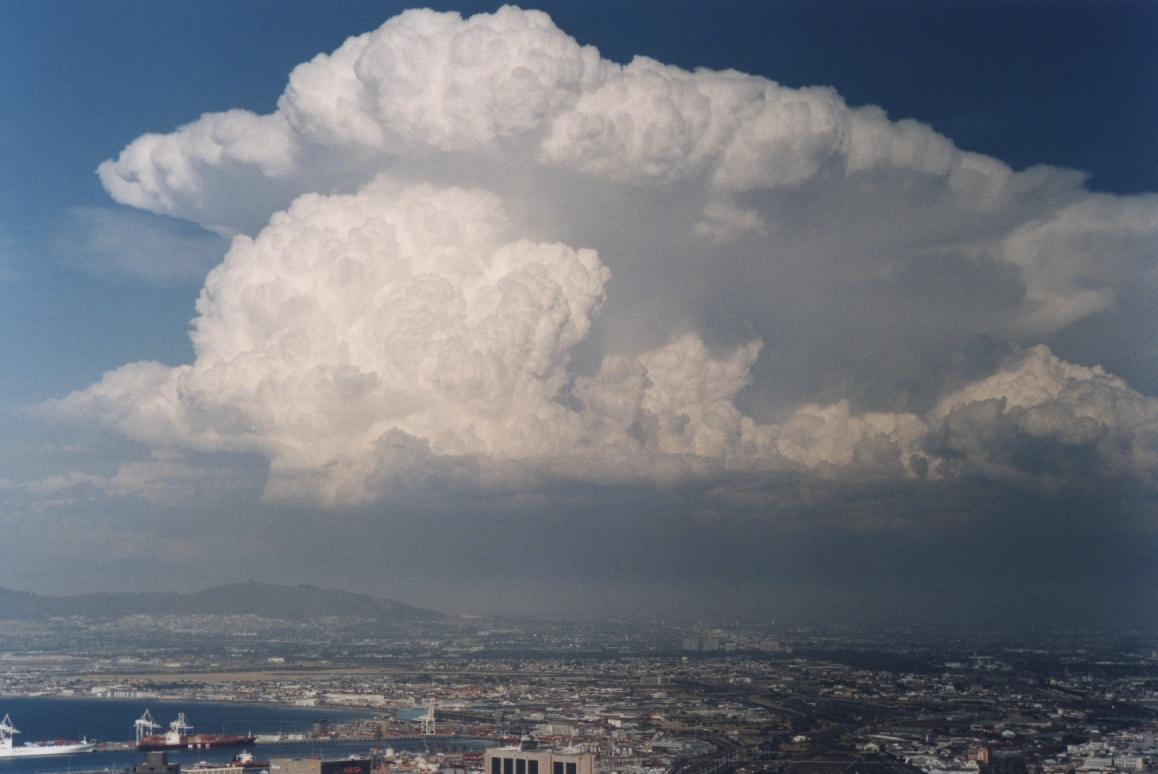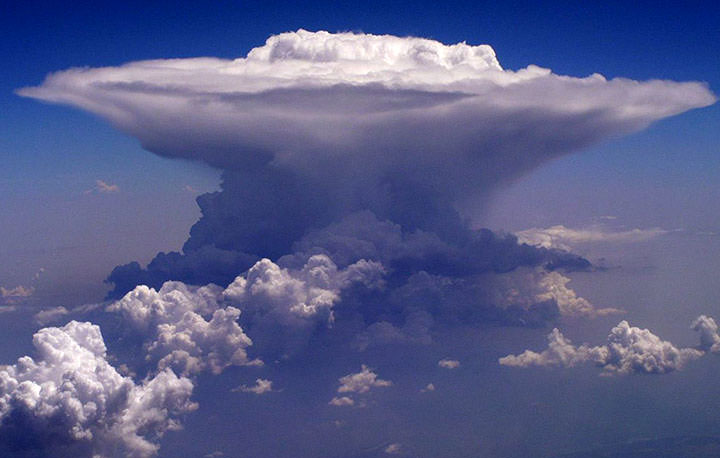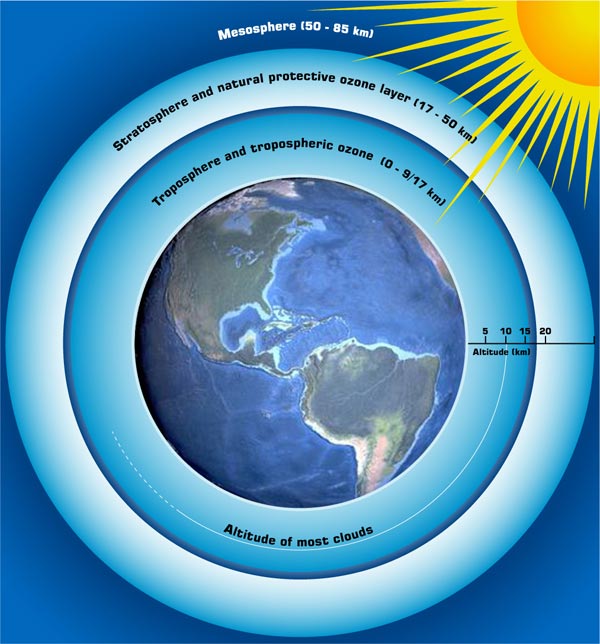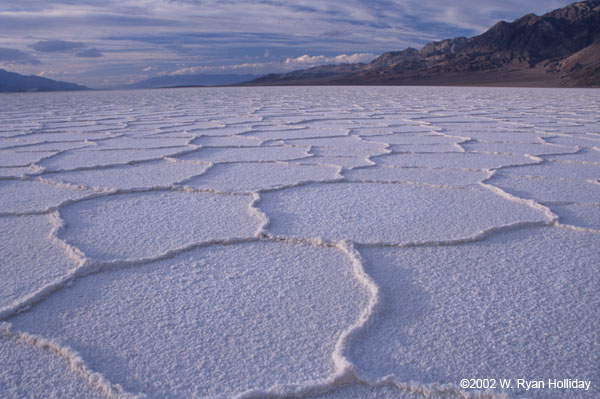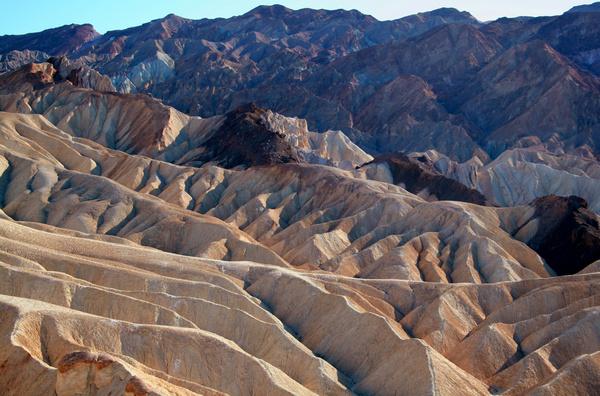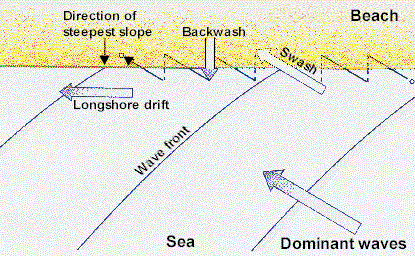 ADVECTION FOG:
ADVECTION FOG: Occurs when moist air passes over a cool surface via wind and is cooled. It is most common at sea when the tropical air collides with the cooler waters.
 RADIATION FOG:
RADIATION FOG: Occurs as a ground fog. It is caused be the radiation cooling of the Earth's surface, and often only occurs at night time. It will never form over a water surface, and often covers a very side area. The radiation causes the lower air to be heated causing evaporation of the lower part of the fog and giving it the appearance of lifting. It is common in high pressure areas and where there are clear skies.
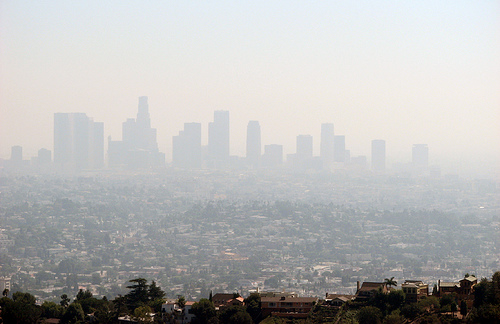 SMOG:
SMOG: A kind of air pollution, meaning both fog and smoke mixed together. It often comes from the emissions of both vehicles and factories. It is also caused by large amounts of coal burning and mixing with smoke and sulfur dioxide.
 HURRICANE:
HURRICANE: A storm system characterized by a large low pressure center and accompanied by thunderstorms, strong winds, and heavy rain. They feed on the heat that is released when moist air rises, causing the condensation of water vapor in moist air. They originate near the equator and often only happen in tropical areas. Though they produce strong winds and rain they are also able to created high waves, and tornadoes. They develop over large bodies of warm water, but begin to lose their strength as they move over the land, meaning that areas close to the coast often receive the most damage. They are very damaging to populations however they can also be quite beneficial to drought situations. They can also help carry heat and energy away from the tropics and move it to temperate latitudes, making it an important part of circulation in the atmosphere and maintaining the equilibrium in the troposphere.
 CYCLONE:
CYCLONE: An area of closed, circular fluid motion rotating in the same direction as the Earth. This means that they moved counter clockwise in the Northern Hemisphere and clockwise in the Southern Hemisphere. They often occur in areas of low atmospheric pressure, and their center is the area of lowest atmospheric pressure in the region.
 TYPHOON:
TYPHOON: A non-frontal, low pressure system over tropical waters in the Northwest Pacific Ocean. They form in the Pacific Ocean, and if they cross the date line they become known as typhoons, otherwise they are known as hurricanes. Most of these storms occur between May and November however it is possible for them to happen all year long.
 TORNADO:
TORNADO: A violent, rotating column of air which is in contact with both the surface of the earth and a cumulonimbus cloud. They can come in all shapes and sizes but are often in the form of a visible funnel, whose narrow end touches the earth. It is often encircled in a cloud of debris and dust.

 Drumlin: A whale shaped hill that has been formed by glacial ice acting on underlying till or ground moraine. Its long axis is parallel to the ice with the more blunt end facing the glacial movement.
Drumlin: A whale shaped hill that has been formed by glacial ice acting on underlying till or ground moraine. Its long axis is parallel to the ice with the more blunt end facing the glacial movement. Esker: A long, winding ridge of gravel and sand which occur often in North America and Europe. Formed in ice wall tunnels by streams that flow under glaciers. They may also form above glaciers when sediment settles in crevices.
Esker: A long, winding ridge of gravel and sand which occur often in North America and Europe. Formed in ice wall tunnels by streams that flow under glaciers. They may also form above glaciers when sediment settles in crevices.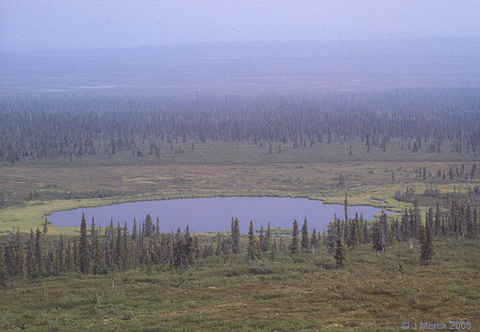 Kettle Lake: Shallow, sediment filled body of water that has been formed by retreating glaciers or draining floodwater. An example of this is Lake Wilcox in Ontario.
Kettle Lake: Shallow, sediment filled body of water that has been formed by retreating glaciers or draining floodwater. An example of this is Lake Wilcox in Ontario. Outwash Plain: A plain formed of sediments deposited by the meltwaters at the end of a glacier. They are most common in Iceland.
Outwash Plain: A plain formed of sediments deposited by the meltwaters at the end of a glacier. They are most common in Iceland.













